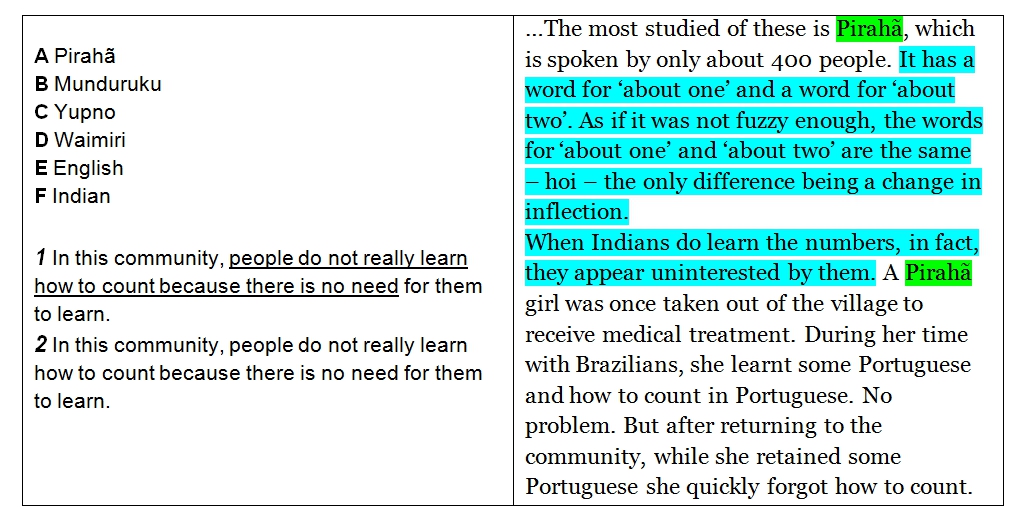There are more than 10 different types of questions you can receive in the Reading section of the IELTS Academic exam. Moreover, there are 3 reading passages with 40 questions you have to answer in an hour. This means that you will deal with up to 4 questions of different types per passage, and it is good to know how to deal with them. Matching features type of question is one of the types of tasks at the IELTS exam that most students struggle with. However, regular practice and a good strategy will help you to tackle it without efforts.
What the task is about
On the day of the exam, you will have your passages on the separate page, and the instructions, the features and the list will be on the other page. This type of question will ask you to match a numbered list of factual statements or opinions to features. Usually, the features are taken from the text, i.e. you will have to be able to identify these opinions or features and recognize the connections between these aspects of the passage.
In this task, you will often have to match a list of people’s names to a list of statements using the information in the text to make the correct matches. For example, the names of researchers, experts or scientists. The statements will normally be research findings, theories, dates with events, places, facilities etc.
Take IELTS with confidence
Start your IELTS Grade online course

For example, in the task above, you see the list of cultures and the statements. You have to match each statement with the correct culture. In other words, you need to read the text and find out who does/did what. For each question, you will need to write the letter of the feature which matches the statement. Make sure you put the letter, not the name of a person or place.
READ ABOUT: How to deal with multiple choice questions in IELTS Reading
General tips
Tip #1. Keep in mind that the statements, or items, do not usually come in the same order as in the text, but the people or things in the list do. Remember this when you look for the answers in the passage.
Tip #2. The number of letters in the list can sometimes be bigger than the number of statements. In this case, you do not need to use all of them. Some are odd.
Tip #3. It is possible that you will have to use the same letter more than once. Do not worry if you use letter B twice, i.e. if you match it with two different statements. This does not mean you have made a mistake. It is possible that some options in the list will not be used, and others may be used more than once.
Tip #4. Do not write any names or words in your answer sheet. Remember that your answer is one of the letters from the list. Do not mix it up with the letter of the paragraph where you find the answer (if the passage contains several paragraphs, they are also named with letters A, B, C etc.).
READ ABOUT: Useful tips to tackle true or false questions in IELTS Reading
How to answer the questions
Matching features task in IELTS checks your ability to determine specific crucial moments in the text as well as distinguish the connections between opinions and facts. You can easily walk through the task if you follow our practical advice during your preparation for IELTS Academic.
Step 1. Read and paraphrase the statements.
First of all, you have to understand the statements, so try to “translate” them into simple English. Some statements might be longer, i.e. they have more keywords and it may be more difficult to understand them. It is important to examine the statements and look for names, dates, and other critical points in them. We highly recommend not to skip this step.
Step 2. Locate the options form the list and underline them.
After you have processed all statements, move on to the list of options with letters. You have look through the text and find these options in the passage in front of you. When you find them, underline or highlight.

Step 3. Read about each name in the list. Match them with the statements.
The next step is to read about each group in the passage and try to match them with the statements. Be careful at this stage, because the information in the text is usually paraphrased, i.e. you will not read the same words. It is a good idea to work on your paraphrasing skills during your IELTS preparation as well.

Remember, if matching features is the first task in IELTS Reading, read the passage quickly to get the general idea and see how it is organized like you do for other types of questions in the Reading sections.
If you still can’t match the correct option to a statement, use the elimination technique. As soon as you’ve matched all the statements to the corresponding options, review your answers and revise them if necessary.
During your IELTS prep, utilize these test-taking strategies when doing practice tests. You will find more strategies and tips for each type of questions in our online self-study course. We have done everything to boost your exam preparation and be 100% IELTS-ready.
Subscribe to our IELTS digest
READ IN OUR BLOG:




